WINTER OCCUPATIONS
During the winter months, we find ourselves somewhat frustrated at not being able to garden. Most of the work was finalized in the fall and we like to let the vegetation rest under the carpets of fallen leaves.
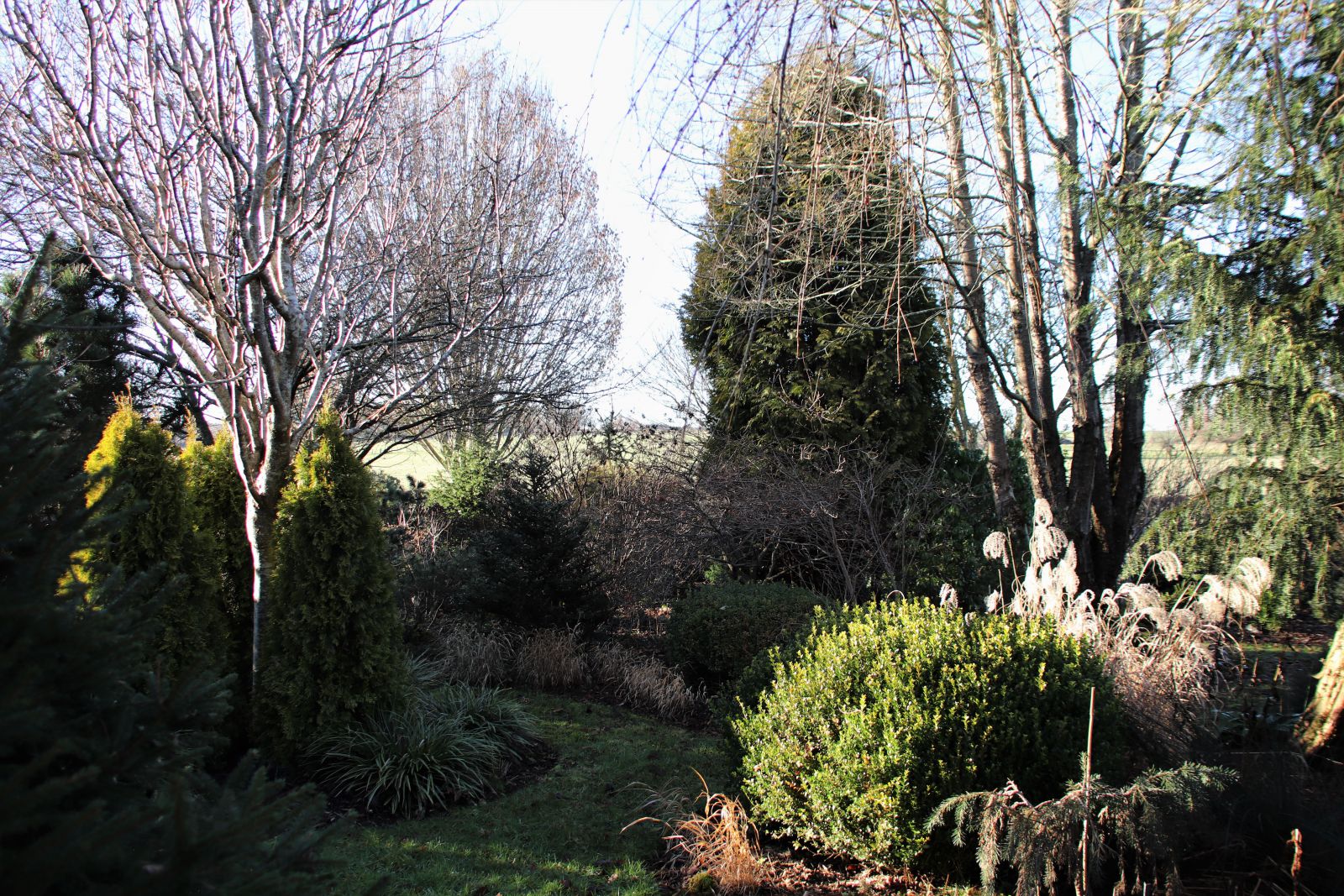
We then take advantage of a beautiful, bright day to walk around and appreciate the spaces. This is an opportunity to discover the garden and its occupants differently. The low winter sun sheds new light, highlighting well exposed plants like stars on a podium.
The star needles of Sciadopitys catch the eye:


Sciadopitys verticillata 'Perlenglanz'
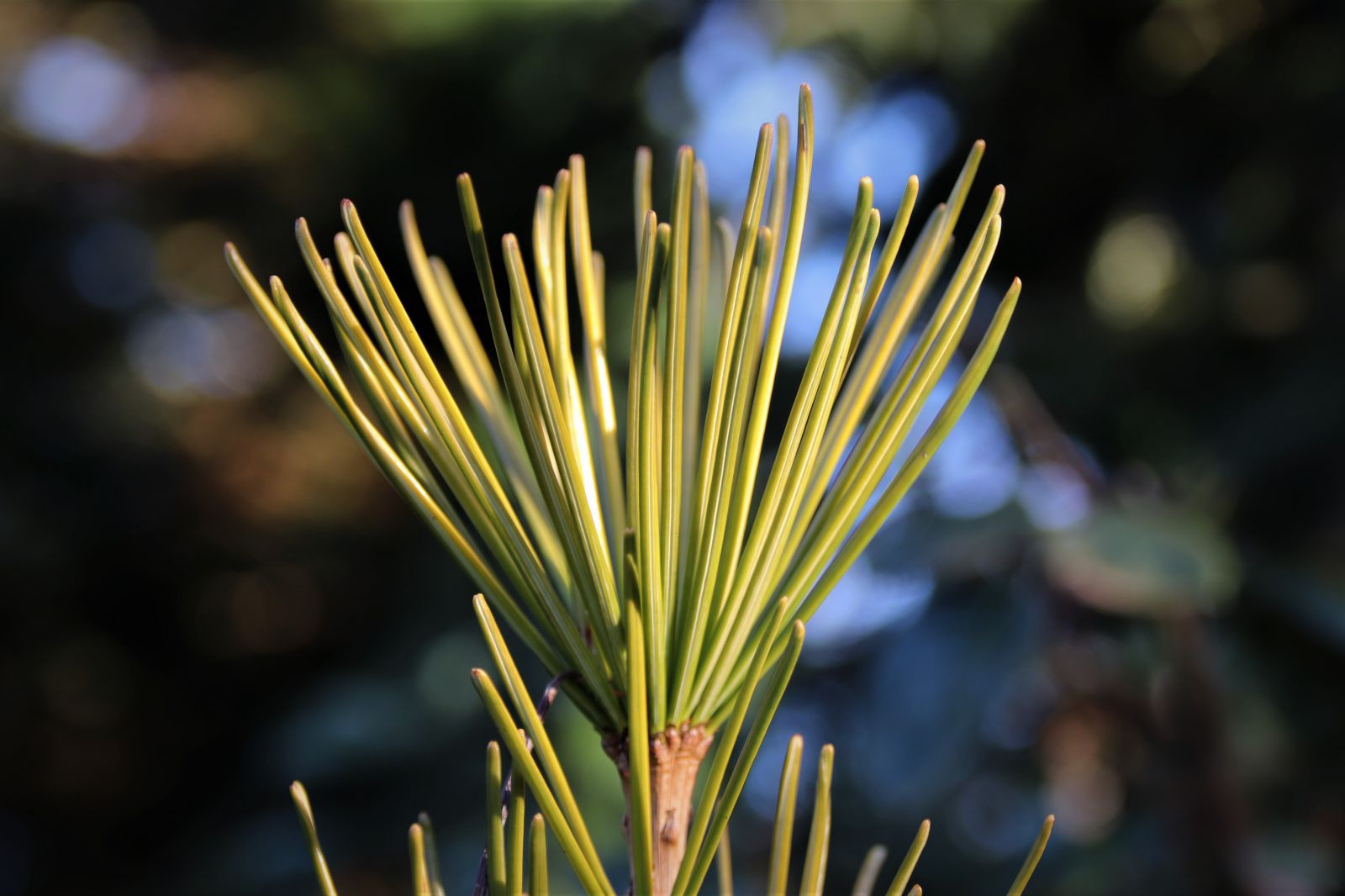
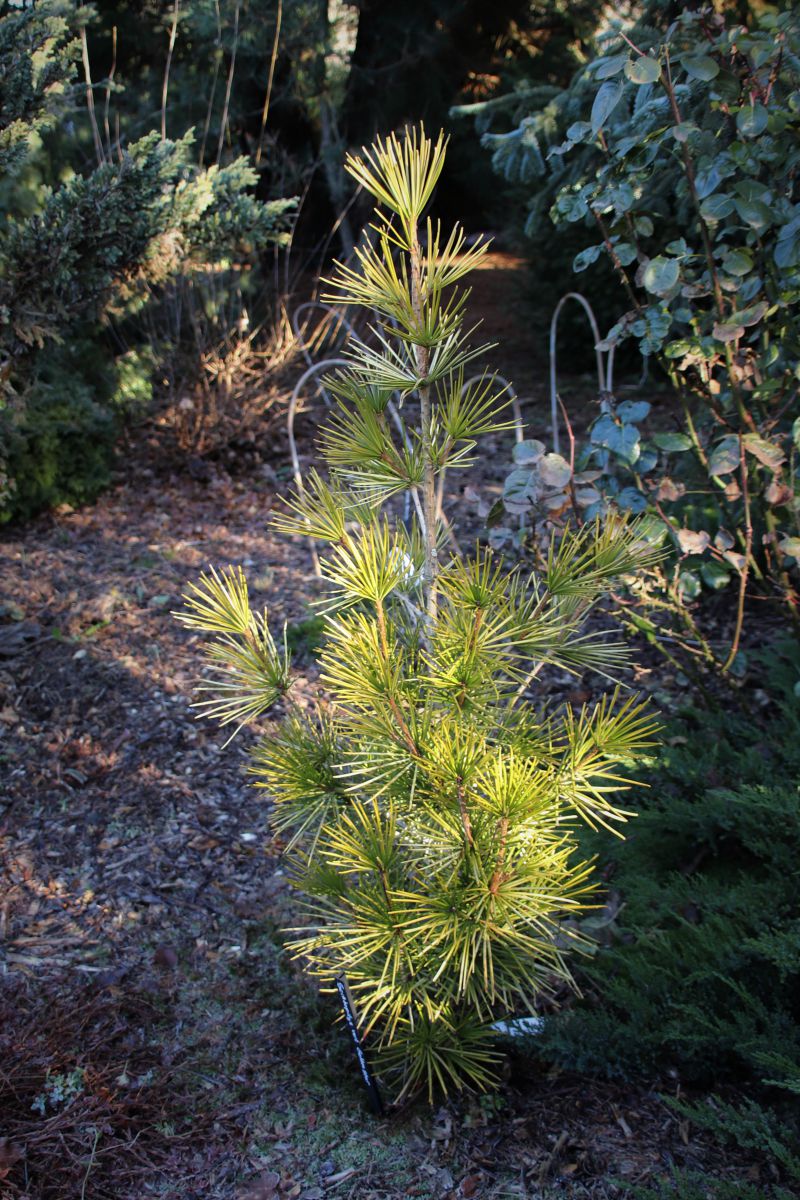
Sciadopitys verticillata 'Gold Star'
This gives us the desire to go browse around the cold greenhouse, where the nursery collection is stored for the winter. The colored shades are particularly beautiful this year, with the fawn, bronze and golden hues.
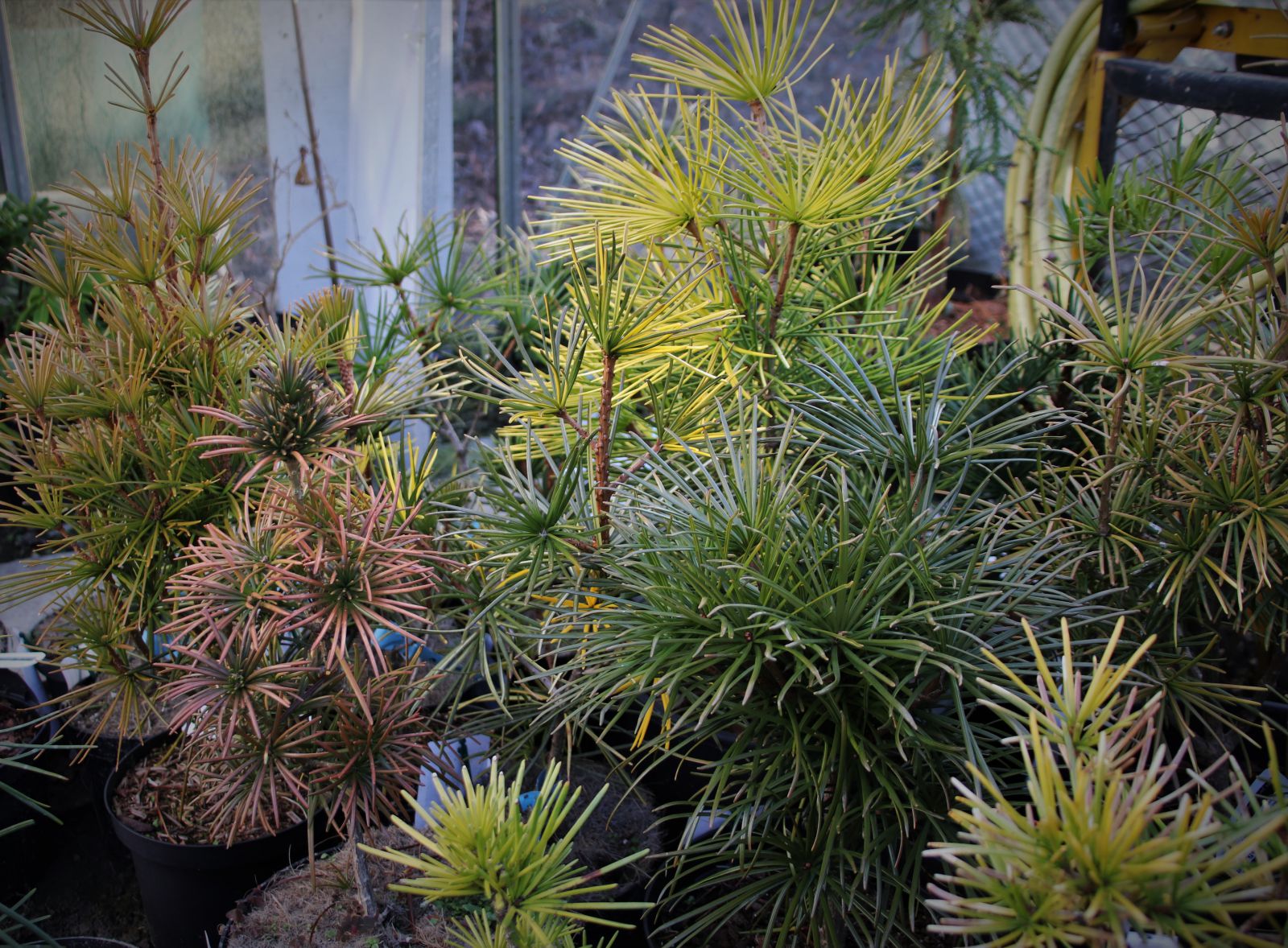
In winter, the colors are particularly warm with the rust, remnants of the autumn just passed, the old roses, the browns, on which stand out the bright greens and emerald blue of the persistent ones. The light stays cold and bathes the paintings in a unique atmosphere.



Colorful conifers are resplendent in this season, this is the case of Pinus wallichiana 'Zebrina'. The tight branches of some bare deciduous trees are expressed with force.
***
It is also an opportunity to appreciate the work carried out during the season, as the low size of this Abies pinsapo 'Kelleris', the renewed place, at its foot, will allow us to install new plants in the spring, some perennial shadows like the Epimedium, or even some Kalmias. Our collection has really grown in recent years, enough to color the month of June. They enjoy wonderfully with conifers.


The sun plays with the textures of the bark, a real pleasure for the eyes.
***
Here is the new path that we created last spring, it has integrated well since, especially under the dead leaves. The Picea abies 'Acrocona' growing too large, we could not condemn it or prune it in any way. It is beautiful as well, so no question of bullying it. We preferred to sacrifice the Picea abies 'Kamon', which we have in duplicate, and divert the path. It was quite a job, but what a pleasure to open up new perspectives in the garden.

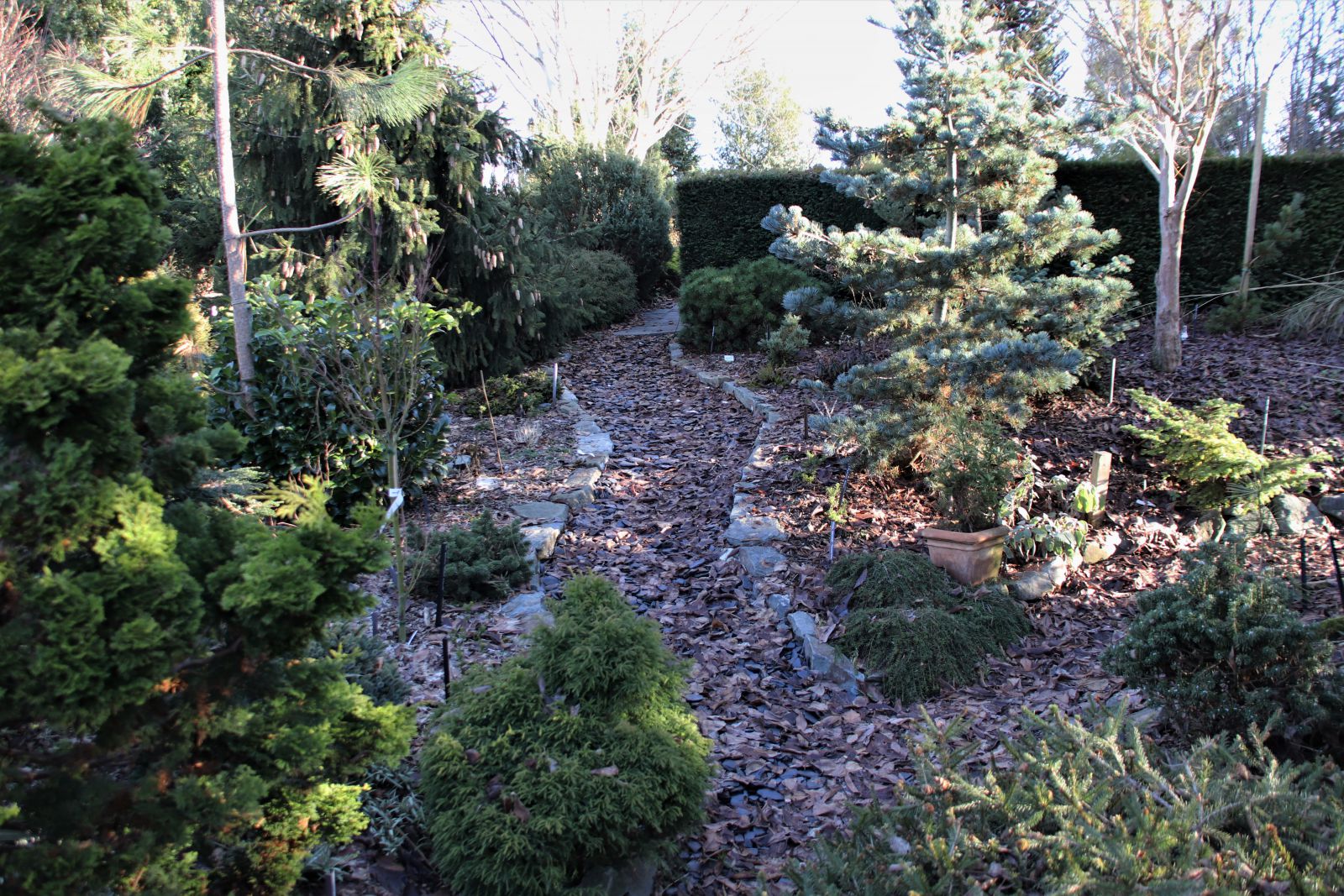
Picea abies 'Kamon' vs Picea abies 'Acrocona'
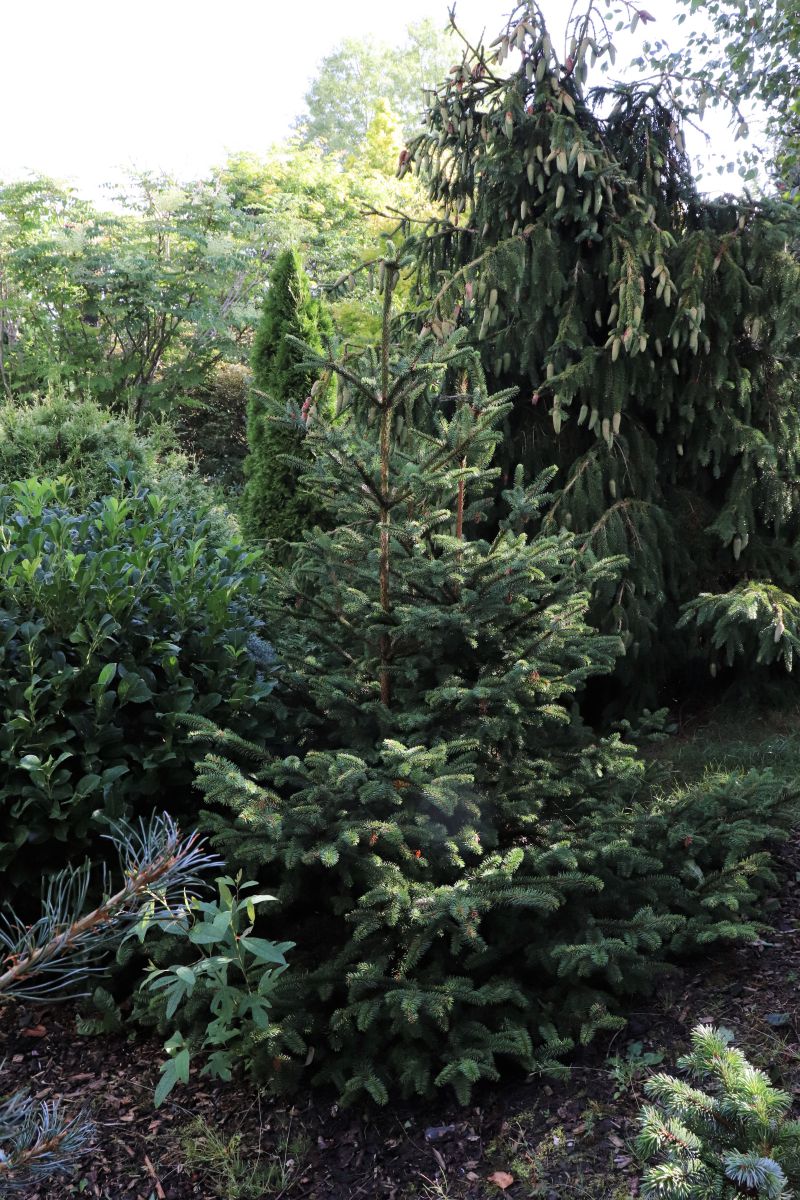
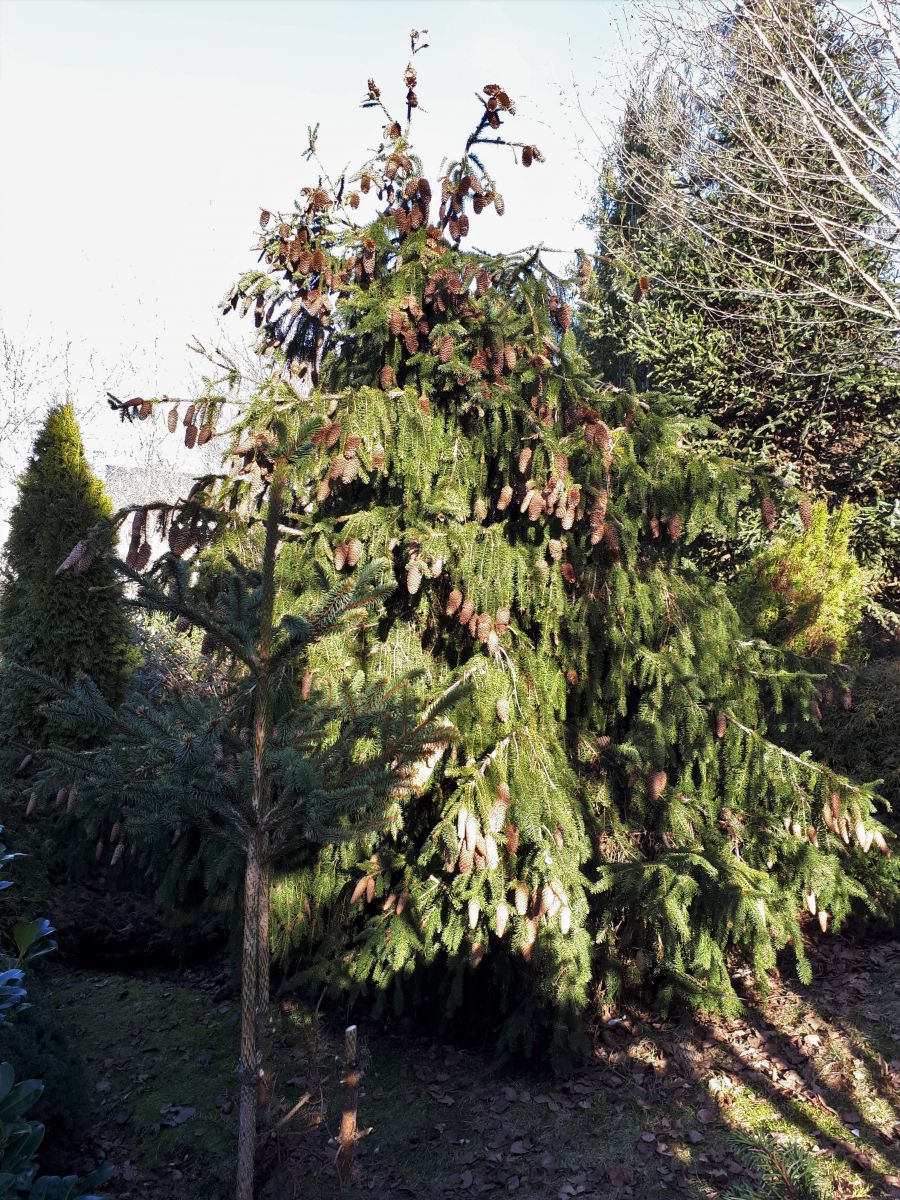
Work at our own pace, which lasted more than a month, a few hours here and there.
We chose a winding path, which respects the slope. We will not install a step.

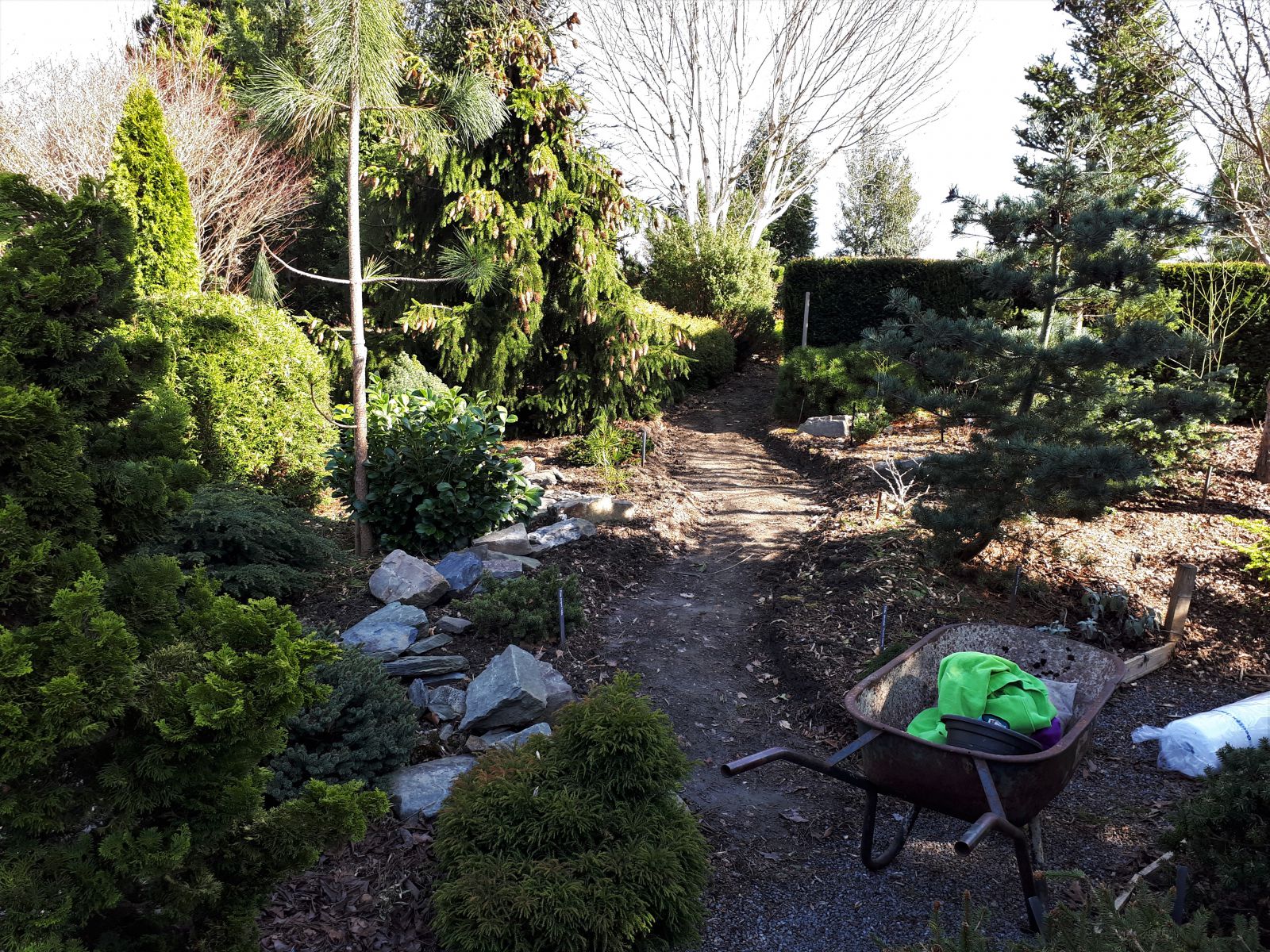
The path starts on the upper plateau (which we have named racetrack by its shape), between the large yew hedge and the Betula utilis 'Doorenbos'. In this place we placed old slabs, flat and rectangular, of blue stone. We had collected them in another refurbished garden and have already placed them elsewhere in our garden. It is always useful to keep this type of material in a chosen place, out of sight. This is inevitably useful, one day or another.

We continue with the borders of large natural stones, shale sandstone, which we recovered from the demolition of an old barn. We prefer to place a geotextile in order to limit the mixing of stone and earth. We do not wish to build a foundation, or a foundation in lean concrete, in order to let the earth breathe as much as possible and to preserve, as much as possible, our little ecosystem. We know that time will make fun of our work and distort it, but it is a voluntary choice to let this path settle as naturally as possible. We will see later, when it comes to restoring it eventually.
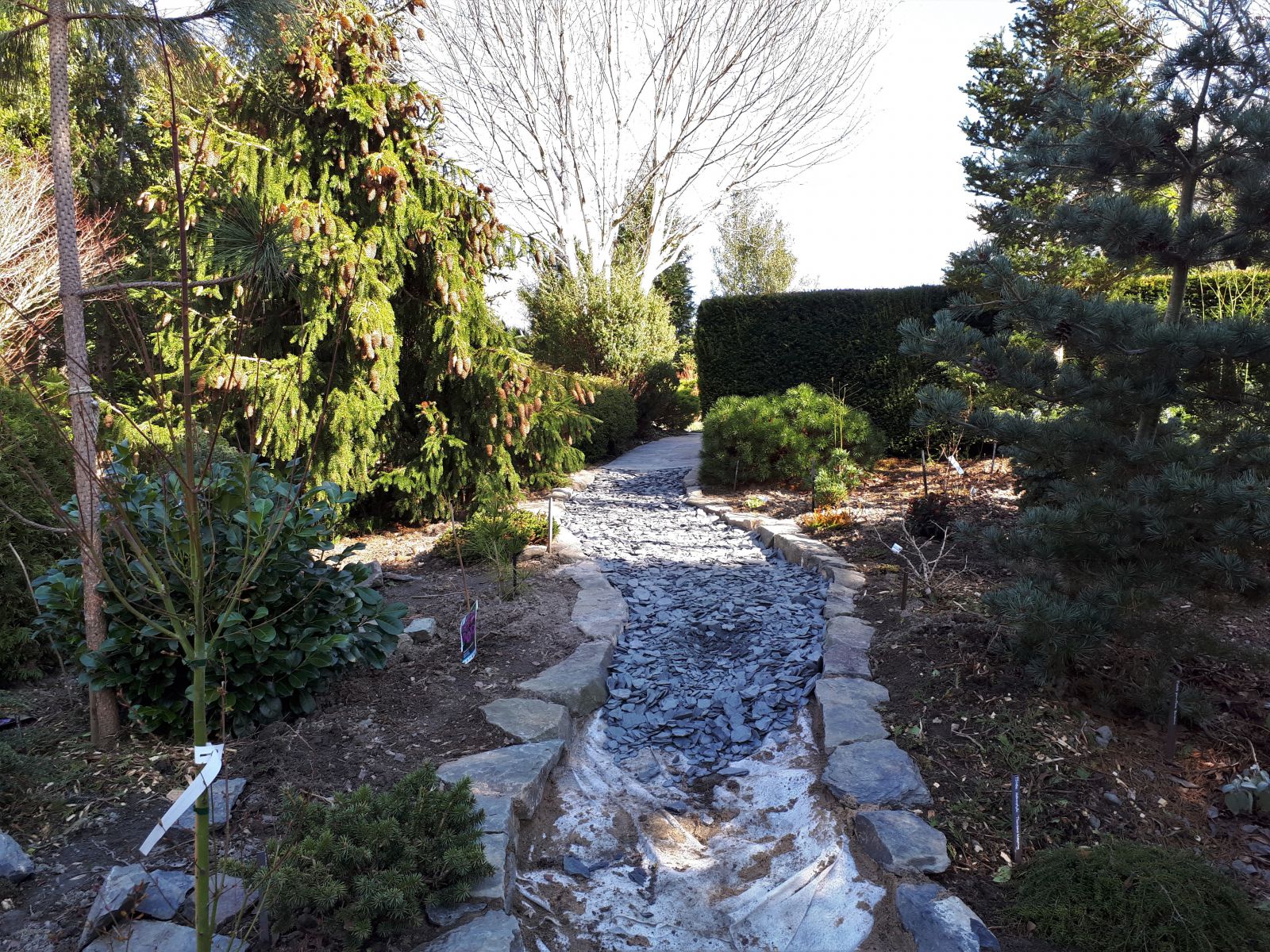
For the filling, this time we chose shale scales. Finally, we are not convinced of this choice and will one day place a new thickness of a much finer stone, as we have at the foot of the path.
***
We continue our little walk. We have not yet cut the hydrangeas and so much the better because they bring a nice volumetry and a lively glow. We will do this next March.
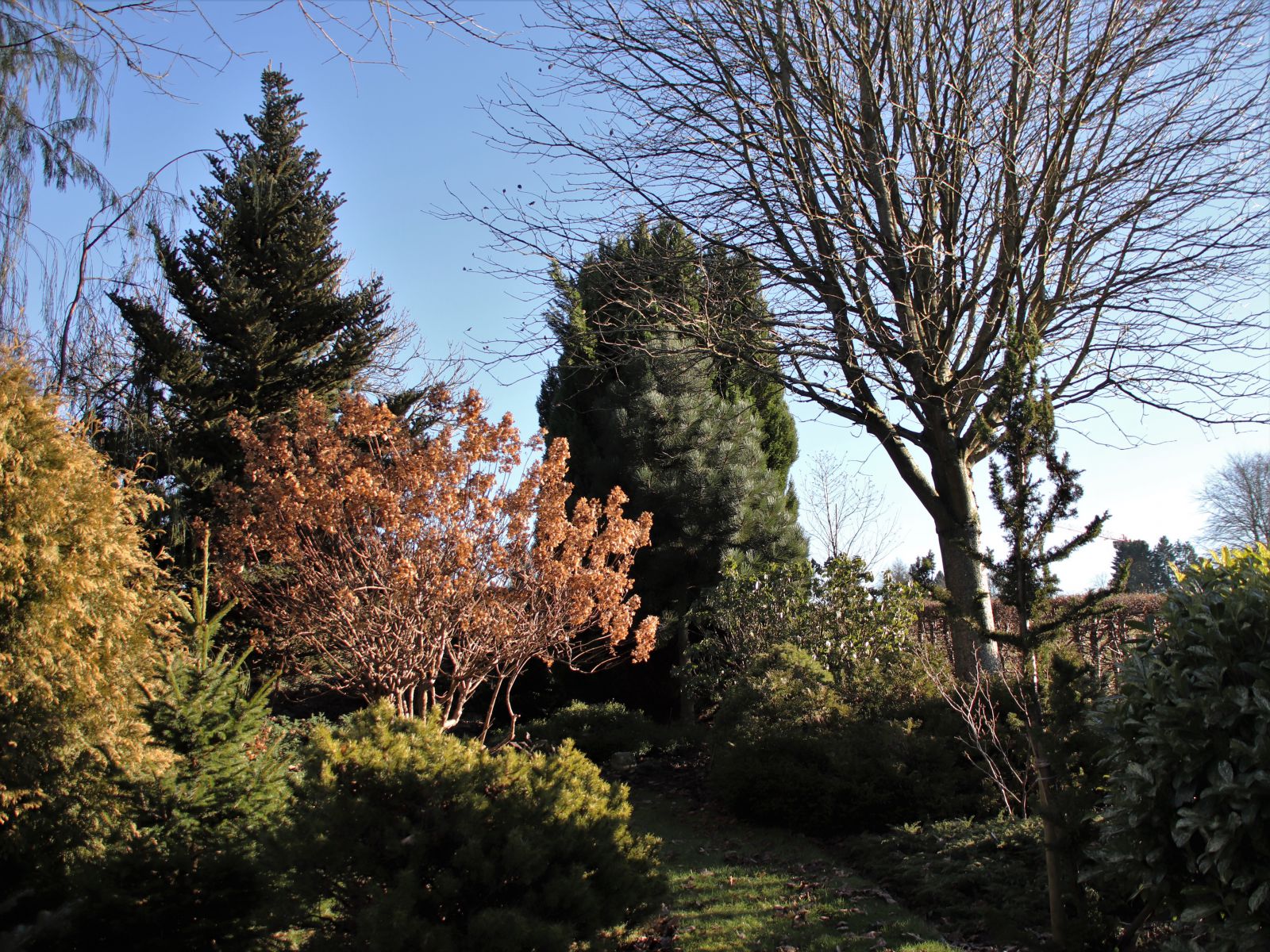
With this sun, certain small details are amplified and become real treasures, such as these rubies thrown on the antlers of Sorbus sargentiana. The buds are ready for spring, but not too fast, please.


Or the immaculate buds of Abies x koreocarpa 'Auweiler'.
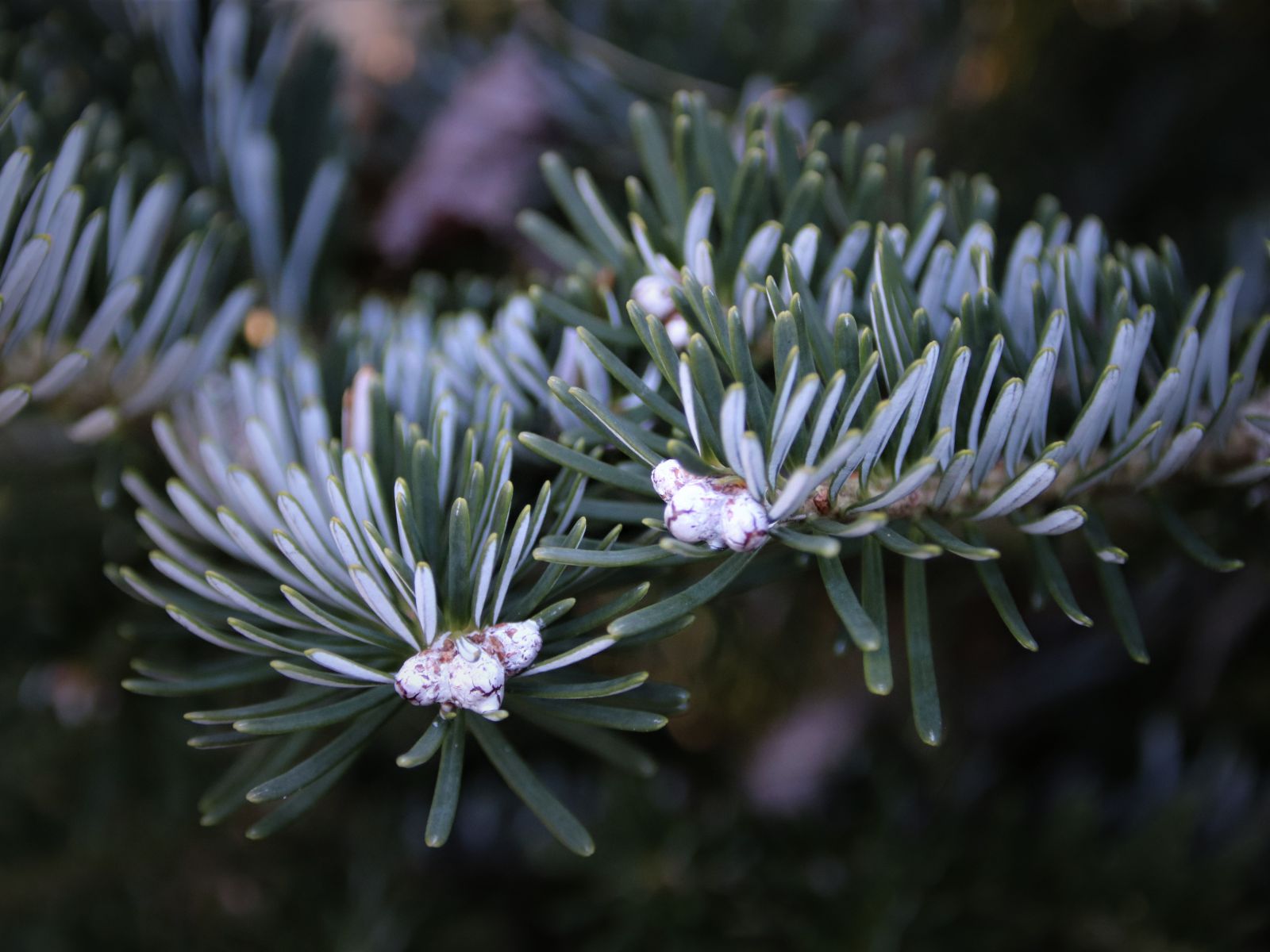
We are also pleased to see that many plants are full of flower buds, such as witch hazel or Rhododendron. Spring will be really promising.
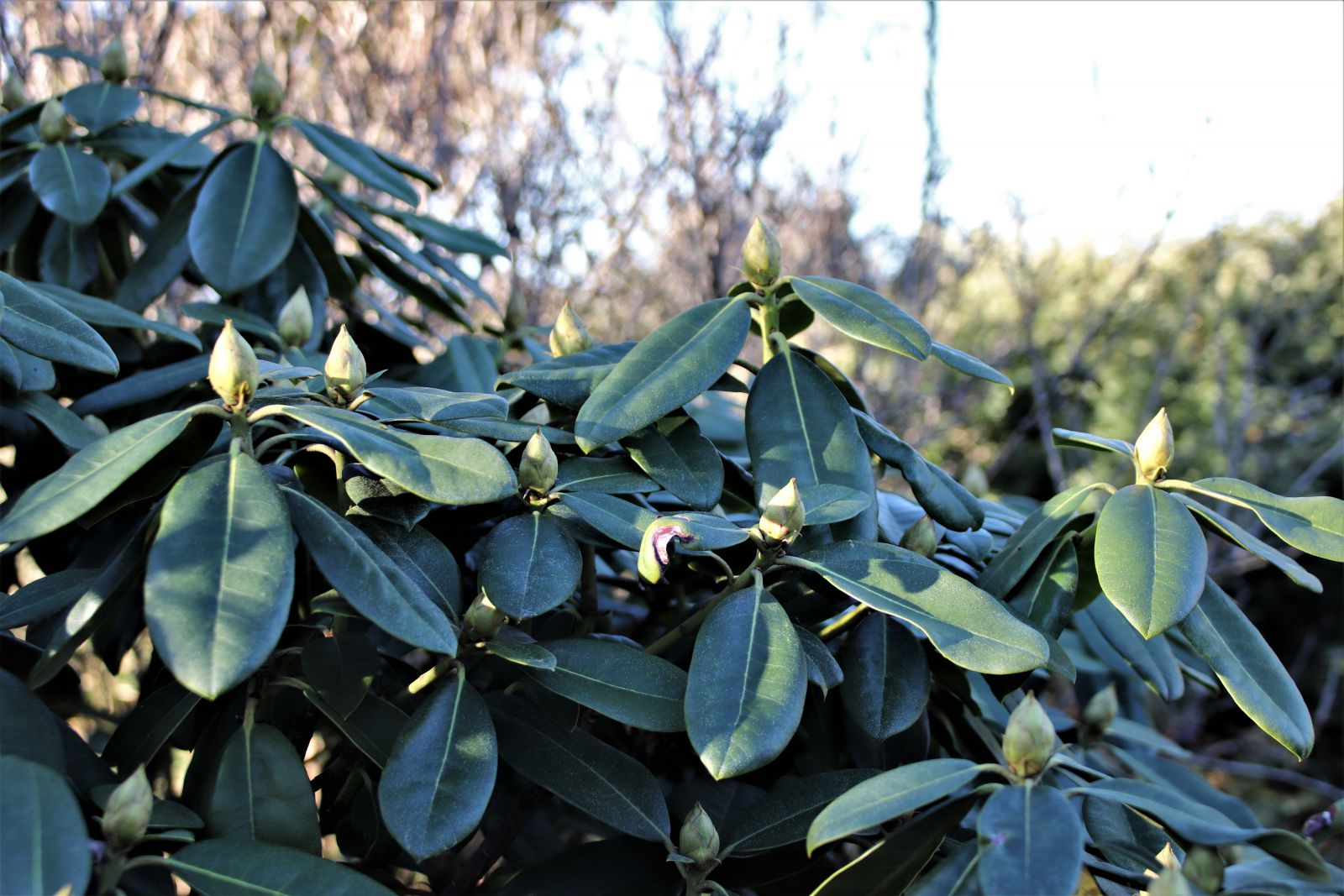
Coming back to the house, the Abies veitchii 'Rumburk' takes center stage. What a splendor! From the top of its stem, it stands out well and offers a nice candor.
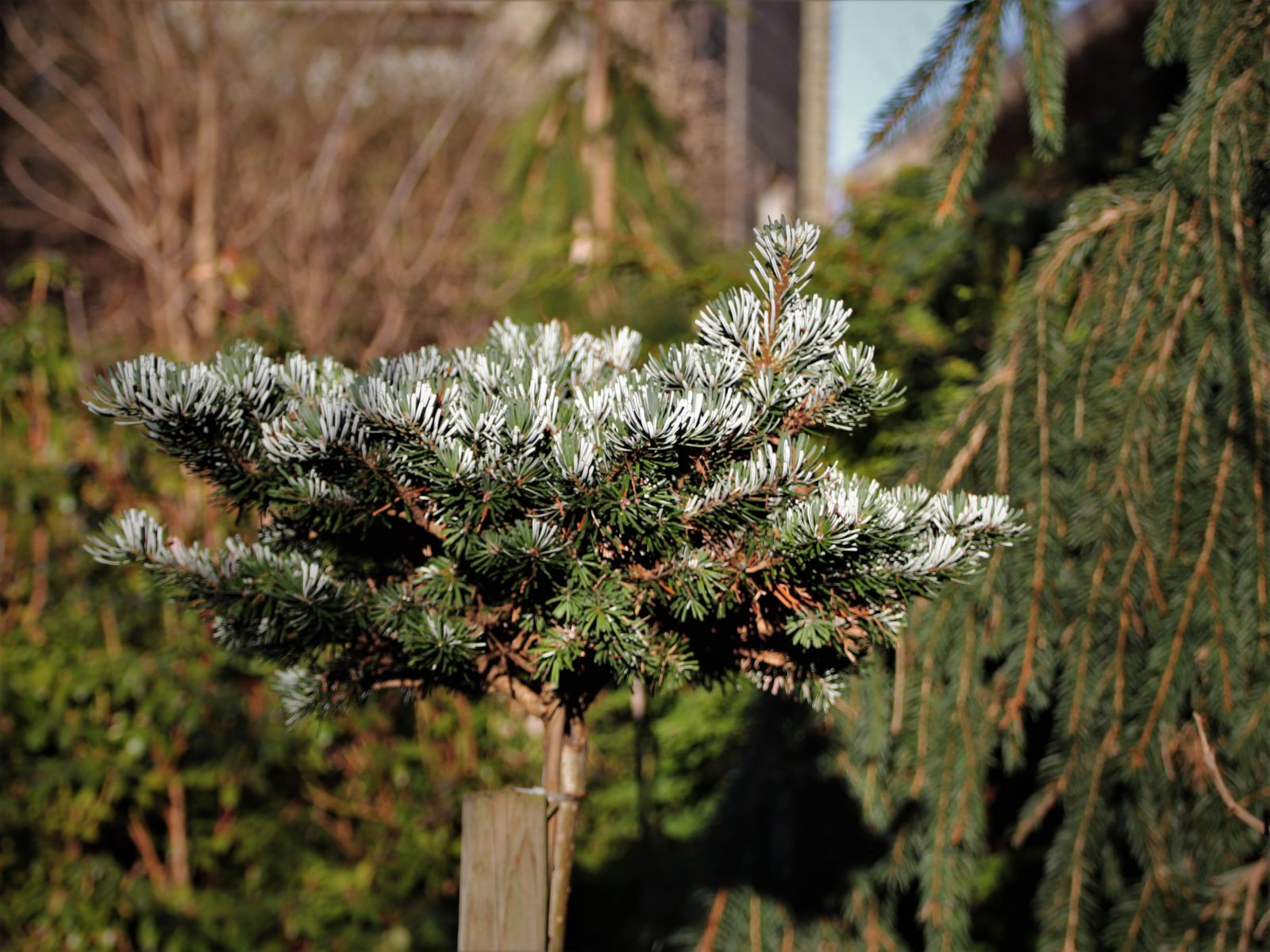
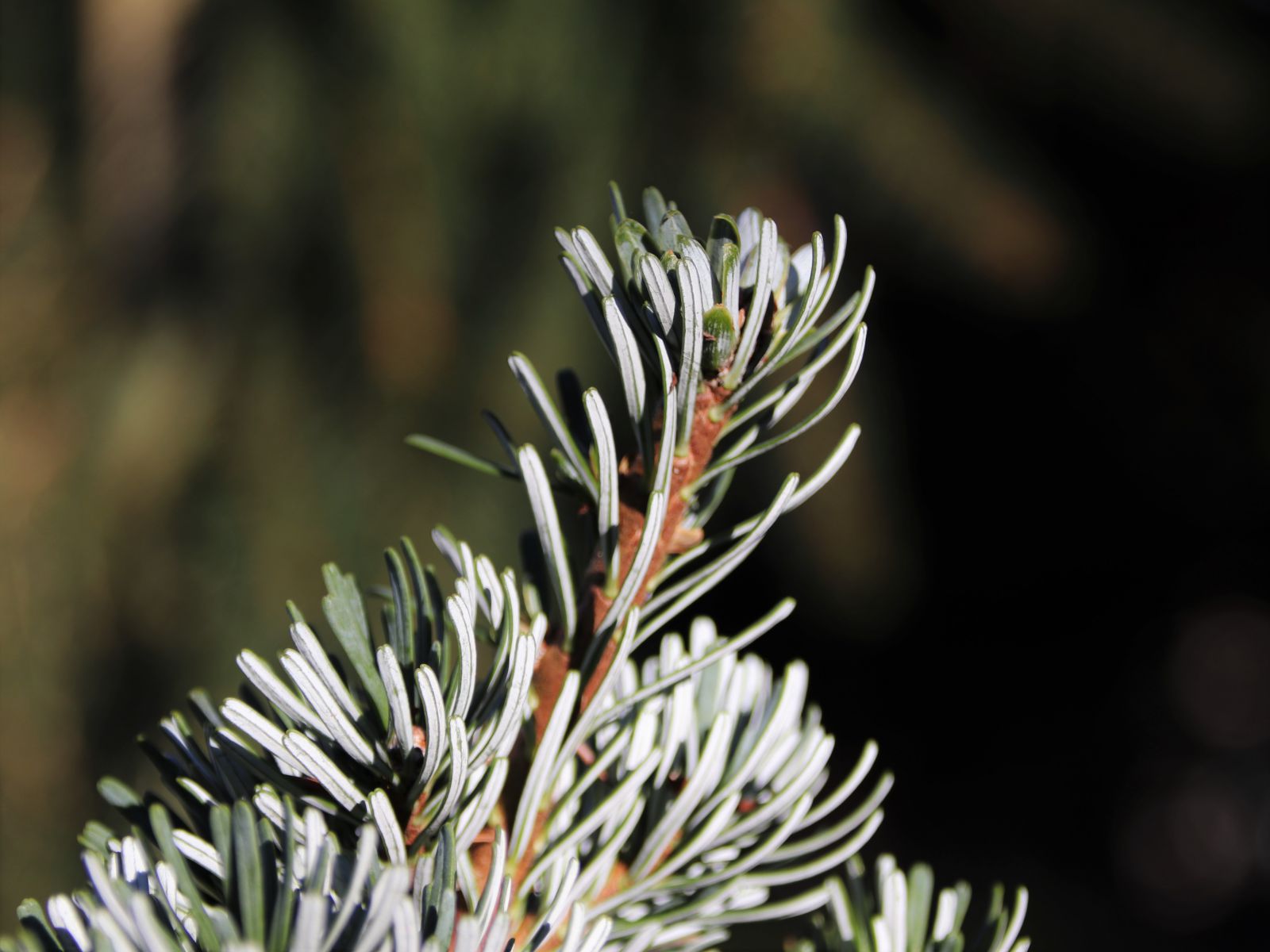
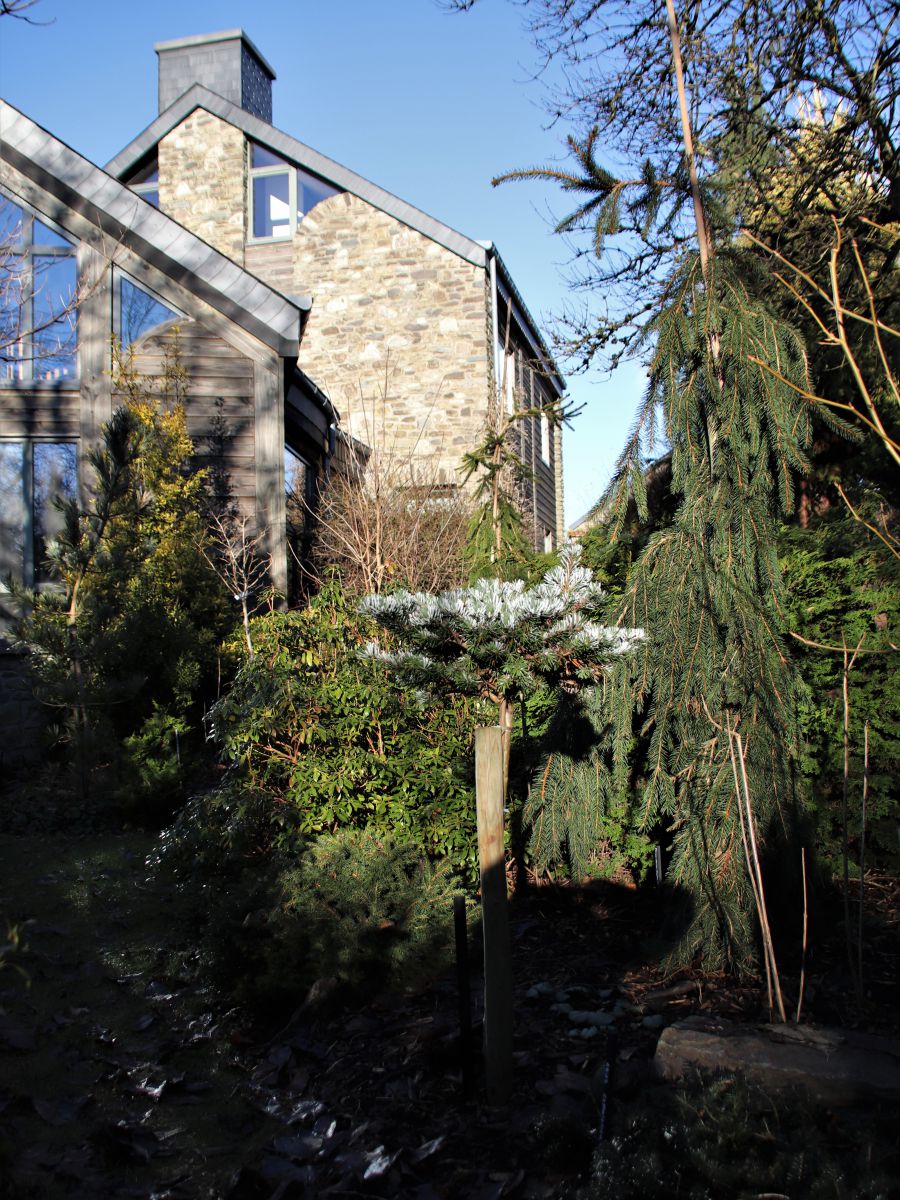
***
This year, we will focus on the path that leads to the nursery. Regularly used, it becomes very muddy and the grass hardly grows there any more.

We are going to try another technique and chose the pebble mosaic. Long ago, in an English nursery, we bought a book on the subject. This year, it will serve us well because it is very rich in explanations and methods to follow.

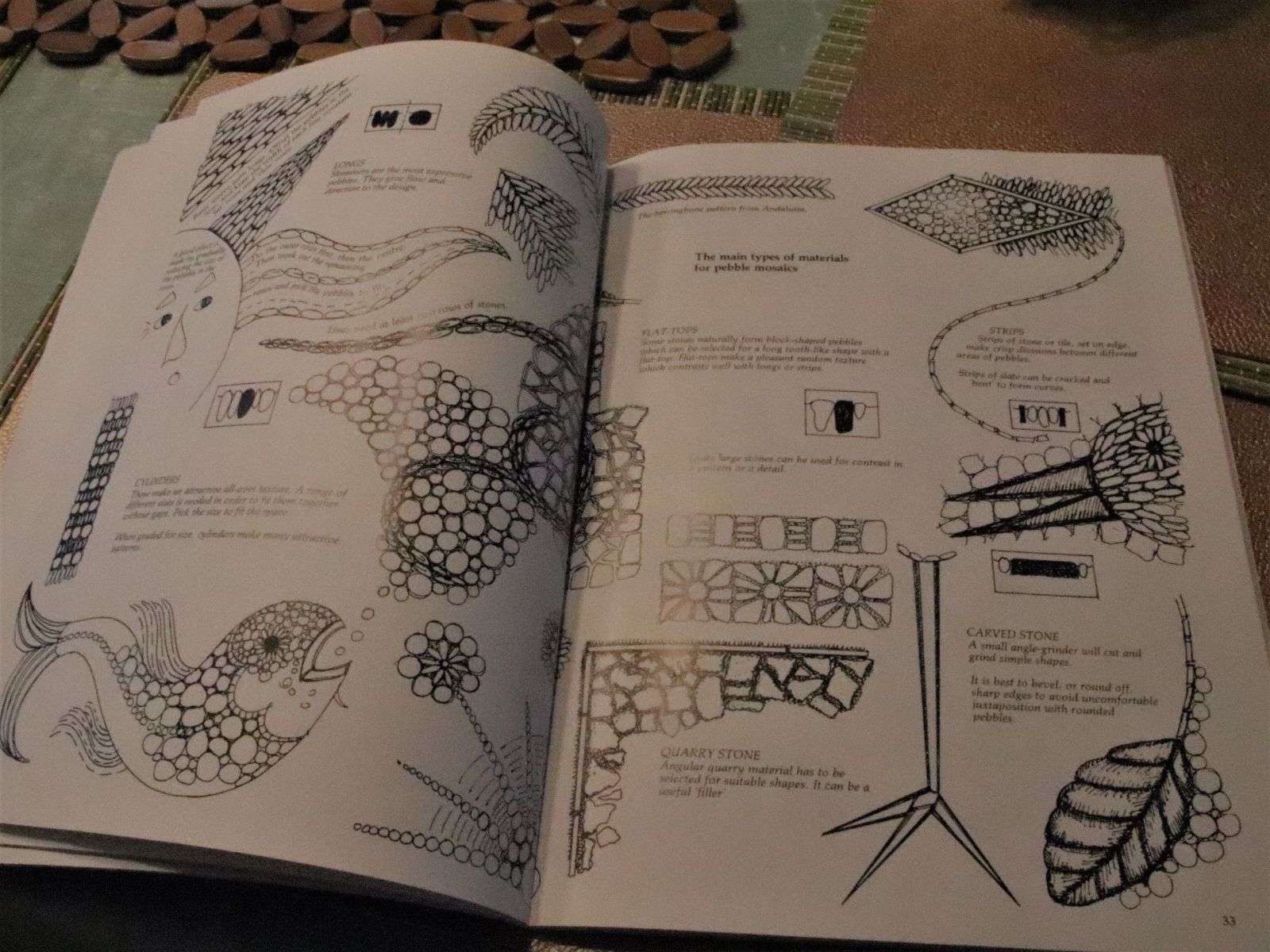
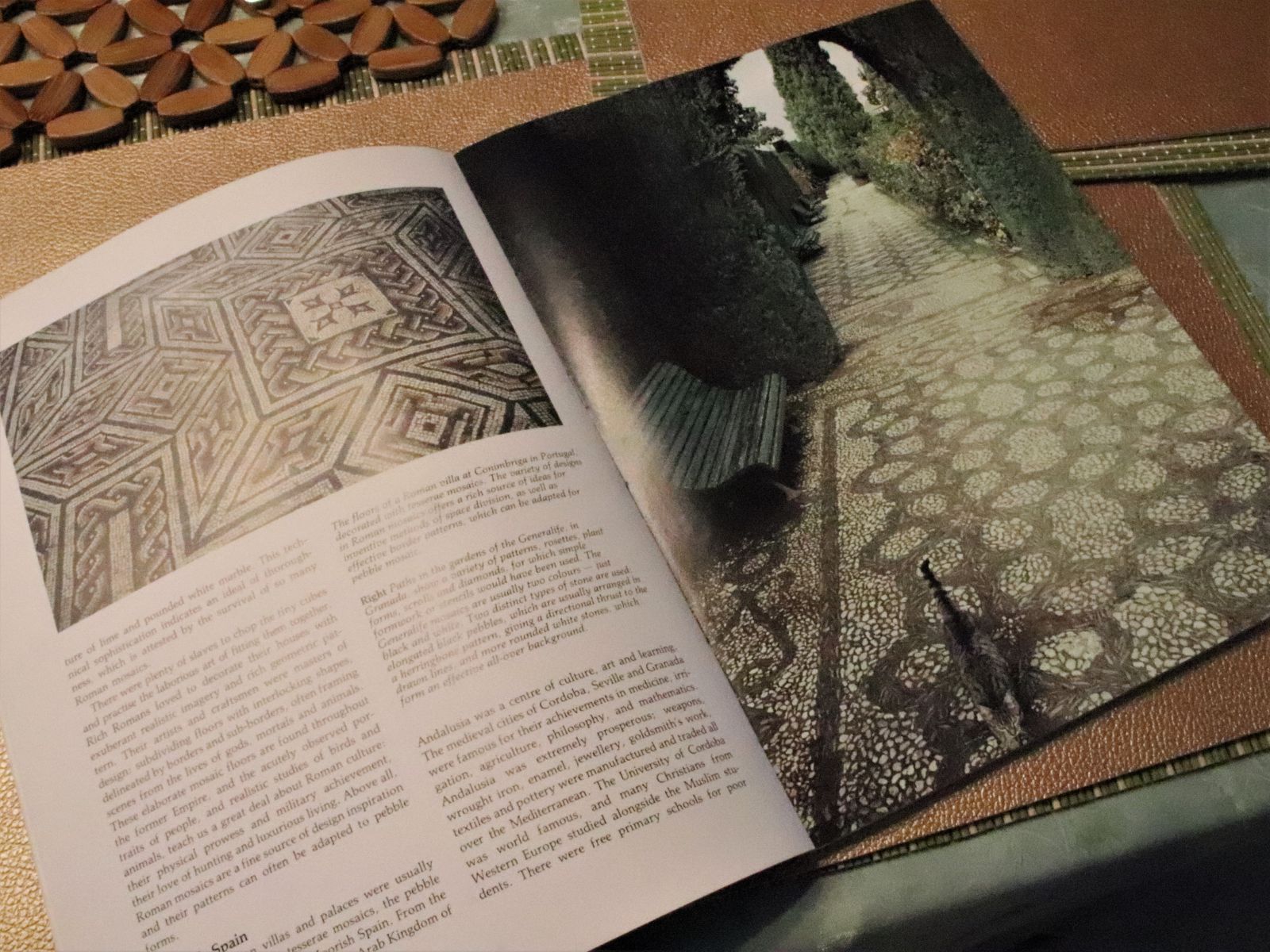
***
While waiting for winter to end, we will soon begin our visits to our producer friends, just to find some nuggets, which we will offer you in the spring. In short, it is difficult to get bored when you are bitten by plants and gardens.


